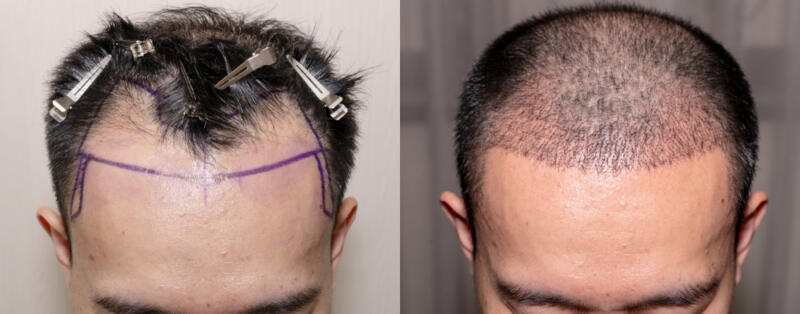
After a Hair Transplant: What to Expect
Having undergone a major procedure, kudos to those of you who have conquered the world of hair transplantation. Now the truly interesting part: what comes next? You will be going through many different stages after a hair transplant, not to mention very common and temporary side effects that almost all hair transplantation patients go through.Follow our guide, and let us walk you through the steps you need to take after a hair transplant, what type of symptoms you are most likely to experience, and the most important dos and don’ts of the process. Here is everything you need to know about the aftermath of a hair transplant.

The Day After a Hair Transplant
You will have a hairband around your forehead and a bandage on your donor area right after the transplant. This is the standard dressing procedure of an accomplished hair transplant procedure, where the hairband on your forehead will protect your face from swelling. The bandage on your donor area will be removed on the day after the transplant.A few days in, you will notice mild swelling, especially in the face and eyes, which is expected to disappear within a week completely. The recipient area will be covered in small scabs, while the donor area will have small red holes that are expected to heal in 2 weeks. Swelling, itching, and moderate pain are very common the first day after a hair transplant. The clinic should provide post-op cleaning and bandage removal.
1 Week After a Hair Transplant
In a week, you may expect the swelling and bruising sensation behind your head and eyes to completely subside. To reduce or minimize these symptoms, you can apply ice, emollient lotion, or similar symptomatic medicine to the compromised area. Needless to say that every ointment should be run by your doctor before application. Some patients do not experience any swelling at all, while most of the hair transplantation patients report the node to be gone within 4 to 5 days.When you have reached the 3-day mark, you should start the post-operational hair wash procedure as instructed by your surgeon. Most hair transplantation clinics offer to conduct the first wash after a hair transplant on the spot, leaving the rest to the patient. After hair transplantation shampoo and lotion should be the only products you use for the next two weeks. Washing your head on a regular basis will help remove the scabs, as well as speeding up the healing process.Within a week after a hair transplant, the grafts are likely to become stronger, eliminating the risk of falling by touching. That being said, it is very important to be extremely gentle and delicate when feeling the operation area for the first 7 days after a hair transplant. Scratching should be avoided at all costs. At this stage, the hair in the transplanted area will begin to fall out, and this process will continue over the course of the next 2-3 months.2 Weeks After a Hair Transplant
Two weeks in, you will notice a period that is usually referred to as “shock hair loss.” This is a natural process of the transplanted follicles that triggers regrowth. After this point, it is safe to say that your appearance will normalize and become much more typical compared to the first days after a hair transplant, making it difficult for strangers to notice that you have undergone hair transplantation, to begin with.1 Month After a Hair Transplant
By the time one month has passed since your hair transplantation, things will be quickly escalating back to normal. After the “shock hair loss” stage has been completed and the hair falling out has stopped – which is expected to happen at around 1 month after a hair transplant – hair begins to regrow and reappear. The first fresh hair follicles will be seen at around the 3-month mark, gifting you with some recognizable changes. The regrowth rate will increase at about four months, and by the end of the 6th month, you will be noticing obvious hair patterns around the operated area.